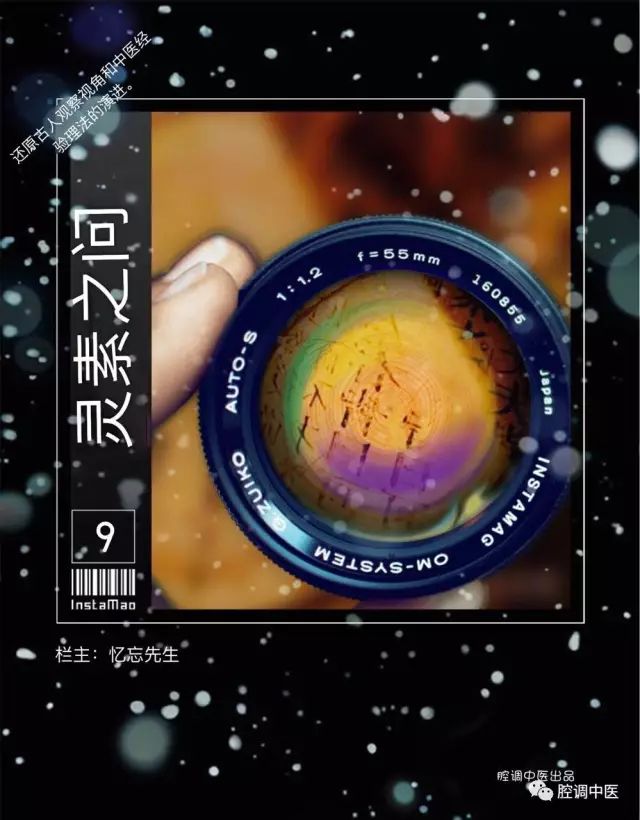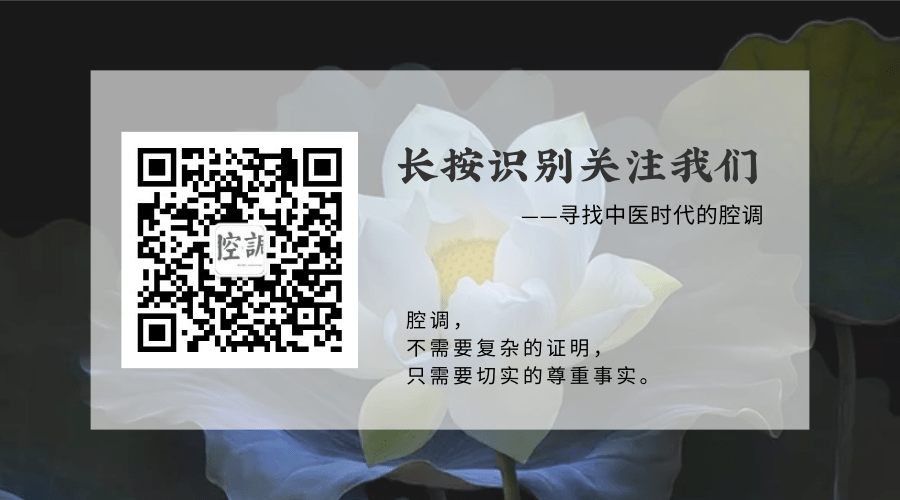
The Inquiry of Ling Su restores the ancient perspective of observation and the evolution of TCM experience and principles. Author Introduction Mr. Yi Wang, engaged in clinical work, studies traditional culture and TCM classics, seeking origins and striving to restore the ancient perspective of observation and the evolution of experience and principles.
—–

—–
The ancient understanding of the concepts of xū (虚, deficiency) and shí (实, excess) was not clearly defined, leading to some residual issues. For example, using xū to describe normal physiology, zhèng qì (正气, righteous qi), the zàng fǔ (脏腑, organs) qi’s deficiency and excess, as well as pathological concepts like “cold deficiency” and “heat excess,” often leads to mislabeling cold conditions as deficiency conditions. This is a result of unclear concepts. Zhèng qì and the qi of the zàng fǔ can be described in terms of strength, but it is inappropriate to label them as deficiency and excess like in pathology.
Therefore, there is a prominent issue that perhaps has not been noticed. The mài (脉, pulse) of deficiency and excess (strength) does not align with the deficiency and excess of the disease. Because they do not align, it is common to see deficiency conditions with strong pulses and excess conditions with weak pulses. This is very detrimental to pulse diagnosis, which relies on the pulse to determine the condition. It is not merely a matter of pulse and condition, but rather a fundamental basis; it cannot rely solely on pulse diagnosis. The concept of pattern differentiation is greater than pulse diagnosis, and it should not be determined solely by pulse diagnosis. Relying solely on pulse diagnosis will certainly lead to misdiagnosis; it must be a comprehensive judgment based on the four examinations.
The fundamental issue with the concepts of deficiency and excess is due to incomplete definitions. Xié qì (邪气, pathogenic qi) is excess or zhèng qì is deficient, which is a so-called asymmetrical symmetry, a special form of symmetry that can be analyzed concretely. The concepts of deficiency and excess are actually a comprehensive abstract concept related to symptoms, diagnosis, and treatment methods, rather than a two-by-two symmetry derived from the concept of yīn yáng (阴阳, yin and yang). It must be based on specific clinical knowledge of physiology, pathology, diagnosis, disease names, treatment methods, and herbal medicine.
Specifically, the recursive relationship of the six elements: cold and heat, exterior and interior, deficiency and excess provides a more thorough explanation. That is, the treatment for excess conditions involves purging methods, while the treatment for deficiency conditions involves tonifying methods.
Thus, starting from the differentiation of cold and heat and exterior and interior, we have already entered the differentiation of deficiency and excess. At this point, the treatment of exterior and interior corresponds to the differentiation of excess conditions, corresponding to methods such as sweating, vomiting, purging, warming, and clearing. The definition of deficiency conditions is relatively simple, with fewer elements compared to excess conditions, such as jīn xū (津虚, fluid deficiency) and wèi xū (胃虚, stomach deficiency). The problem lies in the relationship between deficiency and excess, the complexity of their mixture, which requires clarification and complete classification.

For example, in the case of excess conditions like stroke, there may also be fluid deficiency, or functional issues caused by pathogenic qi such as vomiting, diarrhea, and poor appetite; at this time, it still cannot be called a deficiency condition, and the main direction remains the purging methods for excess conditions. A special intermediate state is the shǎo yáng (少阳, lesser yang) stroke, which represents a mixture of deficiency and excess.
This is also the so-called concept of “shǔ” (枢, pivot) of shǎo yáng, where this “shǔ” refers to an intermediate state, where neither deficiency nor excess is at an extreme level, and neither cold nor heat is at the extremes of great cold or great heat. This indicates that both cold and heat pathogenic qi have two degrees, which correspond to the cold and heat of the four seasons, but are seemingly contradictory.
For example, autumn is suitable for purging, referring to internal dryness, but in the Shāng Hán Lùn (伤寒论, Treatise on Cold Damage), purging is indicated for great heat within, while great heat in the four seasons is summer, and the heat of summer is not internal heat, but rather sweating is suitable in spring and summer. This is an inappropriate analogy that disrupts medical theory.
Additionally, the mixture of deficiency and excess also has different emphases and must be completely classified. The main focus is on tonifying deficiency, treating both deficiency and excess, and expelling pathogenic factors, which are three categories. Deficiency refers to the insufficiency of zhèng qì or function, which can also lead to the production of metabolic waste, i.e., pathogenic qi; at this time, the balance between deficiency and excess determines the different treatment directions.
For example, when metabolic toxicity occurs, it is equivalent to an excess condition, and at this time, there will be a pulse that is weak despite the evidence of excess. Therefore, the deficiency and excess of the pulse cannot completely represent the deficiency and excess of the disease; the myth of pulse diagnosis is thus shattered. Therefore, the deficiency and excess of the pulse are not the same as the deficiency and excess of the condition; the deficiency and excess of the condition are the results of comprehensive judgment.
Deficiency and excess are targeted at the state of disease; however, the strength and weakness of the pulse may not necessarily reflect the state of disease; the deficiency and excess of the disease state is an asymmetrical special symmetry, the primary and secondary of pathogenic qi and zhèng qì; excess pathogenic qi can lead to functional decline, but it is not a deficiency condition; deficiency conditions primarily involve the decline of zhèng qì and function, which can lead to the obstruction of metabolic waste discharge and the generation of pathogenic qi; the mixture of deficiency and excess is a complex situation that requires complete classification; overall, the strength and weakness of the pulse (deficiency and excess) do not completely correspond to the deficiency and excess of the disease; hence, there can be cases where excess conditions show weak pulses and deficiency conditions show strong pulses.
Pulse diagnosis emphasizes the presence or absence of wèi qì (胃气, stomach qi). The strength of wèi qì differs from the deficiency and excess of the disease condition. The “deficiency and excess” of the pulse should be more accurately referred to as the strength and weakness of wèi qì, thus not directly reflecting the deficiency and excess of the disease condition, but can serve as a reference. The two concepts of deficiency and excess in internal and external treatment correspond to two different methods of tonification and purging.

The so-called “deficiency does not receive tonification” is more likely due to excess pathogenic qi and deficient zhèng qì, where the urgent need is not deficiency, but rather the urgent need to expel the metabolic toxins of pathogenic qi. Determining deficiency and excess based on the pulse is actually an external treatment method; the concepts of tonification and purging in internal and external treatment are two different concepts that cannot be unified.
The initial principle of external treatment is that if there is deficiency, tonify it; if there is excess, purge it; neither excessive nor deficient, based on the meridians. The pulse method at the rén yíng (人迎, cun pulse) seems to lack the classification of neither excessive nor deficient, as well as both excessive and deficient, which is a result of desire.
In pulse methods, there are distinctions between left and right, such as the heart, liver, kidney, lung, and spleen. For example, the conservation law in physics is also a desire. The differences between internal and external treatment may be the difference between closed systems and semi-open systems; closed systems apply conservation, while open systems do not.
Thus, the two methods of tonification and purging have significant differences. For example, “for those who are small, both yīn (阴) and yáng (阳) are insufficient, do not use needles but adjust with sweet medicine.” This at least indicates that the “tonification method” of external treatment is limited, and the concepts of deficiency and excess in internal and external treatment are inconsistent.
The unified theory of internal and external treatment is merely a post hoc justification of secular demand. This is the fundamental issue of TCM, which actually pertains to the exchange of metabolism, with other terms being interchangeable, referred to as the exchange of essence, or pò (魄), or methods such as sweating, vomiting, purging, and warming. This is the fundamental mechanism that enables the realization of techniques, rather than philosophy or the theory of yīn yáng and the five elements.
The concepts of deficiency and excess are similar but not identical. The purging method of acupuncture is more at the exterior level, similar to sweating methods, where “to take blood without sweating” and “to take sweat without blood” are involved. Of course, there are also central regulation of stimulation and stress, which differ from internal treatment methods.
The main issue lies in the fact that TCM theory consistently converts the sufficient conditions for the exchange of input and output into the necessary condition of “qi circulating throughout the body,” emphasizing that “we are targeting the living body” as an insufficient condition. It shifts the issue of “therefore, we can manage things” and the problem of metabolic input and output to an internal circulation issue, thus leading to the concept of “acupoints belonging to meridians,” transforming the entry and exit of spirit and qi (stimulation and stress) into the concept of flow, or the “generation and overcoming” between the zàng fǔ (脏腑, organs). This theory confuses the relationship between internal circulation and external exchange. Both internal and external treatment theories stumble here.

In spring and summer, we nourish yáng (阳), and in autumn and winter, we nourish yīn (阴); in the Qiān Jīn (千金) on nourishing nature, it actually refers to nourishing yáng. This is a problem of theoretical classification; there are many issues in medical theory. Especially when it comes to practical clinical use, there are many ambiguous aspects. Thus, there exists a large amount of misinterpretation and distortion in analogy. Secular demand leads to the unification of origins, which is not causal but rather a demand and post hoc justification.
This post hoc justification is fully reflected in treating methods as “truth” or “objective structure,” such as the division of cold and heat, where the mixture of cold and heat recursively becomes a stable fractal structure of three categories; in fact, it is not a structure but an induction and fractal of system elements, the result of which is misrepresented by medical theory as a functional fractal corresponding to structure. The representative is the so-called theory of “guān hé shǔ” (关合枢, pivot of connection), which has been misinterpreted as “kāi hé shǔ” (开阖枢, pivot of opening and closing).
Jīn yè (津液, body fluids) cannot be divided into “yīn” or “yáng” or “cold” or “heat,” because cold and heat are system manifestations, not caused by “any one kind” of jīn yè. For example, shuǐ xuè (水血, water and blood) or yíng wèi (营卫, nutritive and defensive qi) are elements that realize body temperature, not corresponding to cold and heat or exterior and interior; these are often misconceptions that appear in ancient theories.
For example, when wèi (卫) is first unblocked, it indicates heat, while when yíng (营) is first unblocked, it indicates cold, thus correlating yíng and wèi with cold and heat; the result is then modified to “first” and further interpreted as “cut off,” which is even more nonsensical. The division of yíng and wèi in relation to qi and blood is clearly applicable to meridian theory but not to internal treatment methods. When generalized, it becomes corresponding to yīn yáng, exterior and interior, cold and heat, and pulse at the cun and chi, and is used to describe deficiency and excess, ultimately leading to confusion and failure. The problem lies in the misuse of abstract induction and concrete correspondence.
Precisely because of unclear definitions, along with misinterpretations and misunderstandings, the Shāng Hán Lùn has undergone modifications to yíng and wèi, yīn yáng, and the restructuring of the three yīn and three yáng.
Cold and heat are specifically measurable. Exterior and interior, as well as deficiency and excess, are further inductions and abstractions; therefore, they are not “on the same level,” nor are they concepts of “two-by-two symmetry” of yīn yáng, and cannot correspond to specific structures. This is the fundamental issue of theory, that all key concepts of the six elements are unrelated to yīn yáng and the five elements, but are based on physiology and pathology, from metabolic mechanisms to pathological symptoms, from concrete to abstract induction, recursively, rather than being “on the same level” and freely combinable as the concept of yīn yáng. The theory of yīn yáng cannot describe recursion; they are two different fractal methods that are incompatible.
The concepts of cold deficiency and heat excess are caused by the addition of the yīn yáng concept. For example, calling the expulsion of cold “tonifying yáng” implies that all cold conditions are deficiency conditions without any excess conditions. Thus, is heat evil an excess condition while cold evil is a deficiency condition? This strange result is caused by the addition of the yīn yáng theory, which directly leads to confusion between tonification and purging and the concepts of deficiency and excess.
This is why the concepts of “two-by-two symmetry” and “cold deficiency, heat excess” are all caused by yīn yáng leading to confusion. This directly results in the multiple symmetries in the Shāng Hán Lùn, transforming into the three yīn and three yáng as “two-by-two symmetry.” The most typical error is the relationship between published and warming methods, guì zhī (桂枝, cinnamon twig) and sì nì (四逆, four reversals), tài yáng (太阳, greater yang) and tài yīn (太阴, greater yin), exterior cold and interior cold, which have been misinterpreted as tài yáng and shǎo yīn being “interior and exterior.” How can two-by-two symmetry explain this? As for the subdivision of exterior and interior treatment due to recursion, it is even less likely to be discussed. Such a simple issue remains unclear to this day, and various confusions serve as cautionary tales against the yīn yáng theory.

When defining that the pathogenic qi is strong, it then appears that cold evil is “yáng xū” (阳虚, yang deficiency), thus, yáng xū includes cold evil excess conditions, while it can also be a deficiency condition due to insufficient warming. What exactly is deficiency, and what is excess, becomes self-referential and undefinable. It becomes cold deficiency and heat excess. Rather than strong pathogenic qi and weak zhèng qì. Why is cold evil referred to as “yáng xū“? It is because pathogenic qi can lead to functional decline, which is the same as the functional decline caused by insufficient zhèng qì, which is precisely the distinction between deficiency and excess. The yīn yáng theory, however, cannot clarify this.
There are actually many special symmetrical concepts that should not be associated with yīn yáng. For example, deficiency and excess, one is yin and one is yang? It is meaningless. The true significance of deficiency and excess lies in the operation of tonification and purging. Similarly, exterior and interior are also referred to as yīn yáng; if deficiency and excess and exterior and interior are both associated with yīn yáng, then what commonality do their yīn and yáng have?
There is no commonality at all. The division of exterior and interior, in the original meridian theory, is the difference in the locations of the limbs, which eventually transforms into the differences in the properties of the zàng fǔ. The exterior and interior of internal treatment are the pathways of metabolic excretion, which have no commonality with the exterior and interior of the meridians and zàng fǔ. Calling them yīn yáng is meaningless. This is a forced pairing.
Other special symmetries such as slow and fast, before and after, odd and even, when paired with yīn yáng, become even more meaningless. The essence of all things is originally the vitality of the four seasons and four times, with cold and heat and circulation as the core issue, rather than any symmetry being paired with yīn yáng; this is fundamentally a misunderstanding.
Therefore, when observing color and feeling the pulse, do not first consider deficiency and excess, rather than the ambiguous “yīn yáng“. Diagnosing the deficiency and excess of diseases is not entirely based on the pulse; this is a significant difference from the tonification and purging of external treatment methods. For example, “Although Biān Què (扁鹊) said this (treating cold and heat oppositely), one must carefully examine, combining color, pulse, exterior and interior, excess and insufficiency, and the corresponding movements and rest of the person, only then can one discuss it.”
The deeper issue is “recursion.” That is, the concept of deficiency and excess is greater than the exterior and interior, cold and heat; in other words, exterior and interior, cold and heat belong to the purging of excess conditions, the pathways of expelling pathogenic factors, while deficiency conditions belong to insufficient intake and require tonification, thus likely involving dietary treatment methods, i.e., the use of neutral tonifying herbs. This is the “bǐng cǎo shí hán wēn” (本草石寒温, the cold and warm agents of herbal medicine) and the disconnection of tonification methods from the era of Zhāng Zhòngjǐng (张仲景) to the new era of “classical formulas”.
However, the theory of Zhāng Zhòngjǐng has been consistently misinterpreted and misunderstood. The reason lies in how the relationship between deficiency and excess in the internal treatment system, the definitions of deficiency and excess, and the two systems of expelling pathogenic factors and tonifying deficiency are integrated, rather than how the unified desire of external and internal treatment can be realized within the yīn yáng and five elements system.
The concept of deficiency and excess is the core issue in the history of TCM theory; other issues are secondary.

To learn more about the articles in the Inquiry of Ling Su series, please click 👇
Topic: Inquiry of Ling Su


